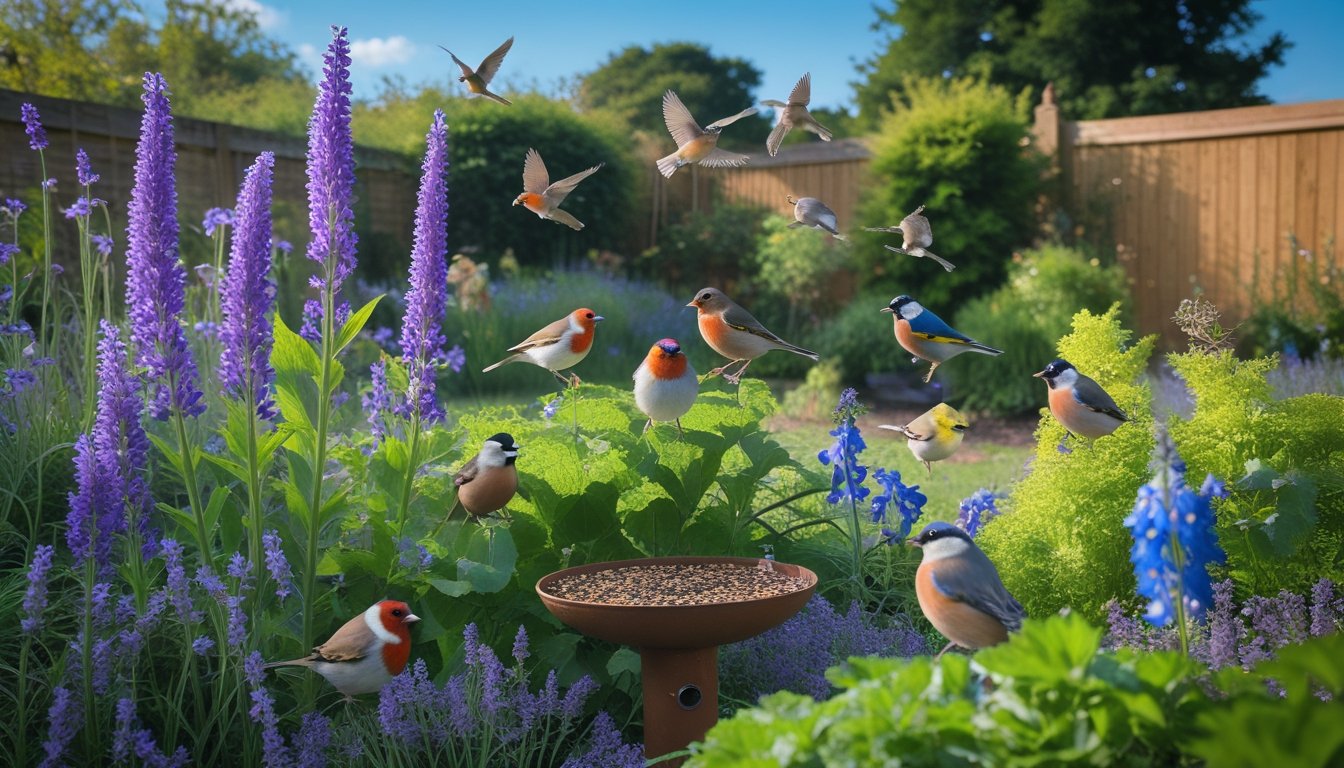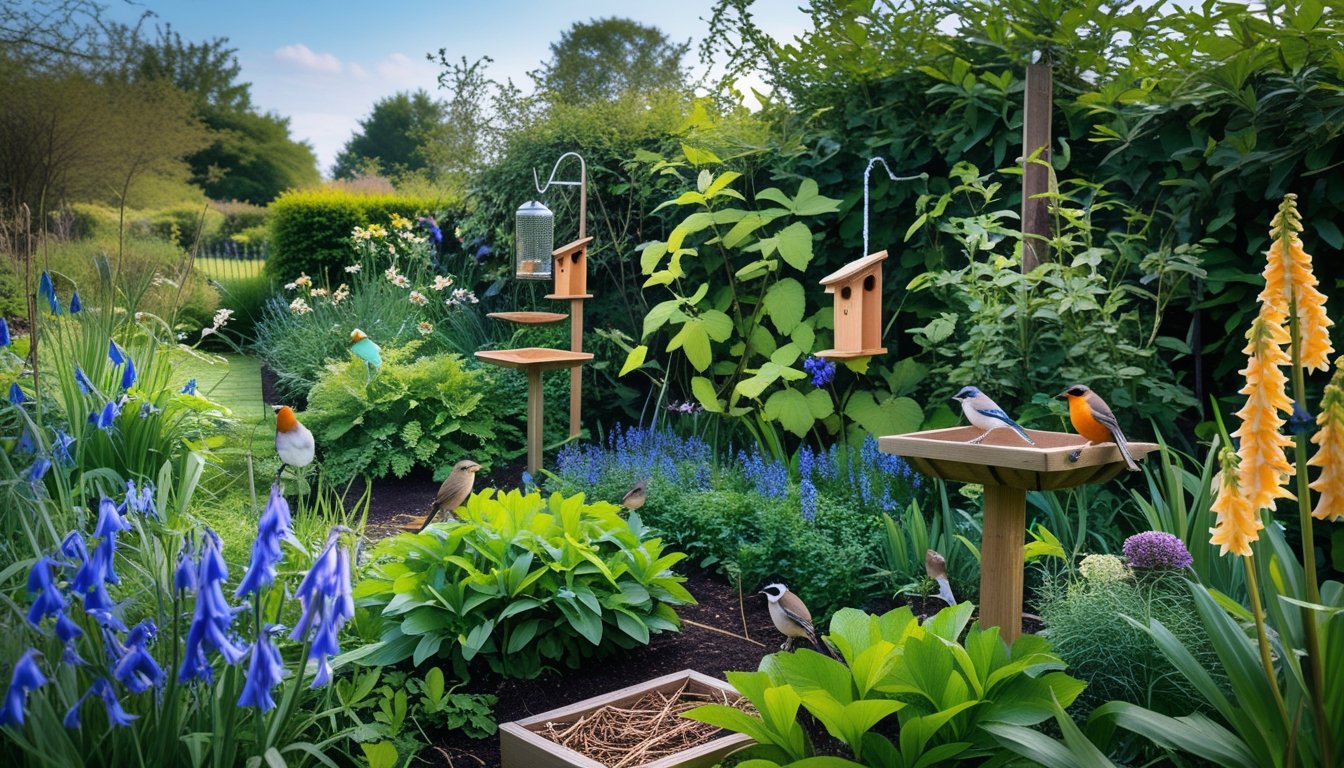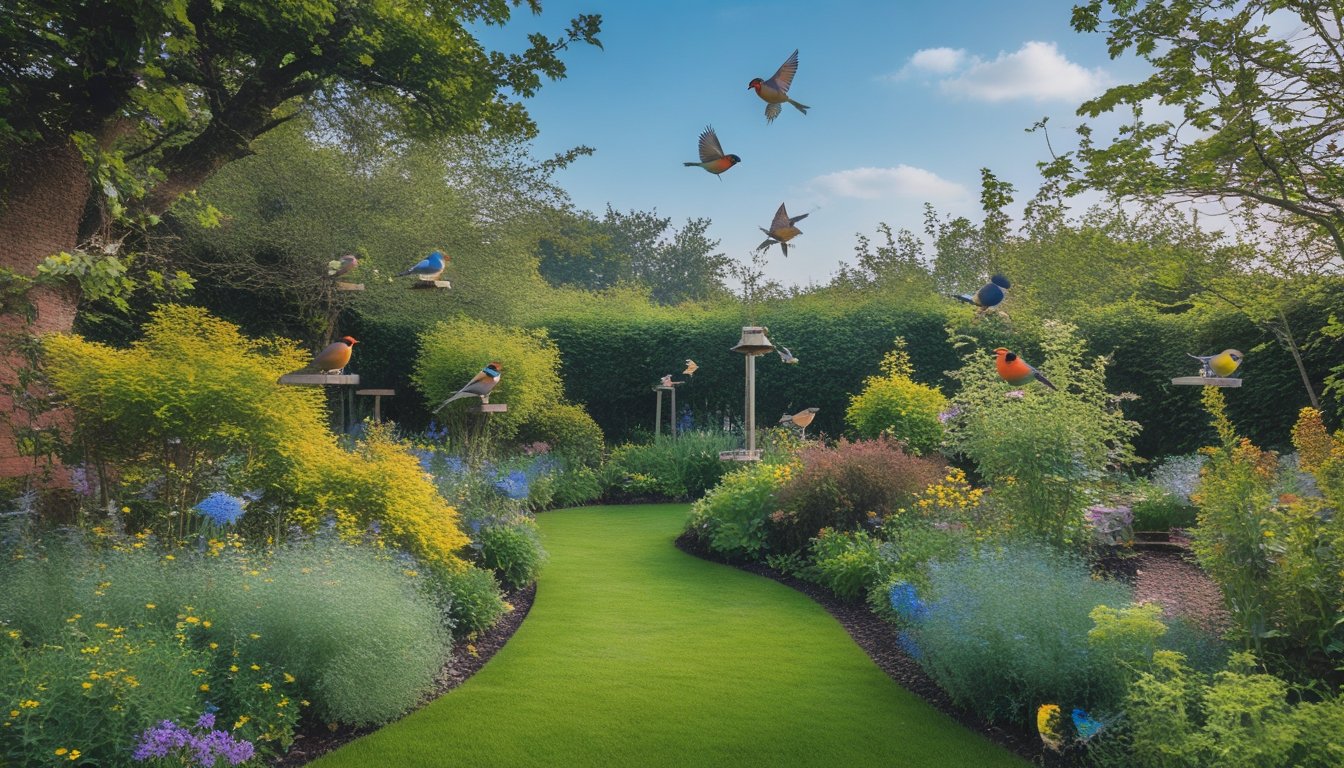Late updated: 31 Jul 2025 08:07
Written by: Emily Thornton
Attract Birds To Your UK Garden With Native Plants: Enhance Biodiversity and Beauty
Creating a garden that's a vibrant sanctuary for birds is a rewarding endeavour for both us and the local wildlife. One of the simplest and most effective ways to attract birds in the UK is by incorporating native plants into our gardens. These plants provide essential food sources, shelter, and nesting opportunities for a wide range of bird species throughout the year.

Native plants have the added advantage of being well-adapted to the local climate and soil conditions, making them relatively low-maintenance and environmentally friendly. By choosing species native to the UK, we create a sustainable habitat that supports our feathered friends while also enhancing our garden's beauty.
We can encourage even more bird activity by ensuring our garden mimics their natural environment. This involves not just planting native species, but also considering elements like water sources and safe spaces for nesting. Together, let's explore how our gardens can become oases of life and activity.
Key Takeaways
- Incorporate native UK plants to support local bird species.
- Consider elements like water sources and nesting spaces to enhance habitat.
- Native plants are adaptable, low-maintenance, and environmentally friendly.
Choosing Native UK Plants To Attract Birds
When planning to attract birds to our gardens in the UK, it's vital to select native plants that offer nourishment and shelter. These native species are beautifully adapted to local ecosystems, providing essential habitats and food sources for birds. From trees to climbers, the right choice of plants can transform our outdoor spaces into vibrant aviaries.
Key Native Trees and Shrubs for Bird Food and Shelter
Hawthorn and holly stand out as quintessential native trees, offering both sustenance and refuge. Hawthorn produces clusters of red berries loved by thrushes and blackbirds. Its dense thickets also make it an excellent nesting site. Holly (Ilex aquifolium), with its glossy leaves and striking red holly berries, serves as a winter food source and a protected nesting spot. Malus, commonly known as apple trees, can provide a bounty of apples consumed by many bird species, offering both nourishment and shelter.
Hedgerows and Berry-Producing Species
Hedgerows play a pivotal role in supporting bird populations by acting as corridors and refuges. Integrating rose hips and native honeysuckle into our hedgerows can significantly increase their appeal to birds. Rose hips provide vitamin-rich food during the colder months, while honeysuckle produces nectar-rich flowers that attract insects, which in turn draw insectivorous birds. Such plantings create a thriving landscape conducive to foraging and nesting.
Climbing Plants and Their Benefits for Birdlife
Ivy (Hedera) is an exceptional climbing plant that weaves its way through our gardens, offering multiple benefits to birdlife. Known as a wildlife-friendly plant, common ivy not only furnishes a safe nesting habitat but also attracts insects with its late bloom. These insects are a rich food source when other resources are scarce. Similarly, honeysuckle twines beautifully, producing flowers and berries cherished by many birds, enhancing the vertical spaces in our gardens.
Wildflowers and Seed-Rich Plants for Attracting Seed-Eaters
Incorporating wildflowers in our gardens enhances biodiversity while offering seeds for birds. Teasel (Dipsacus fullonum), with its spiky heads, is a favourite among seed-eating birds like goldfinches. Meanwhile, sunflowers supply abundant sunflower seeds, highly nutritious for various birds throughout the year. Planting wildflowers creates a tapestry rich in blooms and seeds, indispensable for attracting pollinators and feeding birds, nurturing a balanced ecosystem.
By purposefully selecting these native plants, we can greatly enrich our garden habitats, drawing diverse bird species to our doorsteps.
Creating a Bird-Friendly UK Garden Environment

In our UK gardens, fostering an environment that appeals to varied bird species involves understanding their basic needs for survival and thrive. It's essential to incorporate native plants, maintain a balanced ecosystem, and provide resources such as food, water, and shelter to create an inviting atmosphere for species like robins, blackbirds, and finches.
Understanding the Needs of Common and Iconic Bird Species
Our approach begins with familiarising ourselves with the unique needs of the birds frequenting UK gardens. Robins and blackbirds often seek gardens with dense shrubs for protection. Blackbirds and thrushes are drawn to gardens with a mixture of open spaces and cover. Bird-friendly plants like hawthorn and rowan are not only familiar to these birds but also offer valuable food sources.
Goldfinches and sparrows benefit from gardens with seed-bearing plants, while waxwings and starlings often favour berry-rich shrubs. Understanding these preferences allows us to tailor our gardens specifically to the species we wish to attract, encouraging them to become regular visitors.
Supplementing Natural Food With Bird Feeders and Water
Though a garden rich in native flora provides fundamental resources, bird feeders offer an additional boost, especially during winter months. Our use of feeders stocked with seeds, nuts, and fat balls complements natural offerings. Blue tits and house sparrows, for instance, are particularly fond of sunflower seeds and peanuts.
Providing a clean water source such as a bird bath or shallow dish is equally important. Regularly refreshed water ensures that birds can drink and bathe, promoting their health and hygiene. Bird baths also provide entertainment as we watch various species gather for a communal splash.
Nesting Sites and Shelter: Nest Boxes and Dense Planting
Offering safe nesting sites is crucial for birds during breeding seasons. By installing nest boxes, we can cater to specific species' needs—those for blue tits, wrens, and great tits should have smaller entrances, while larger boxes accommodate starlings. Position these away from direct sunlight and strong winds.
Dense planting is another effective strategy. Plants like holly and ivy offer not only shelter but also vital nesting spots. Incorporating hedges or living walls can create essential corridors and protected areas within our gardens, safeguarding nests from predators.
Promoting Biodiversity and Year-Round Appeal
Biodiversity is the foundation of a thriving, bird-friendly garden. By cultivating a mix of nectar-rich flowers, shrubs, and trees, we attract essential pollinators like ladybirds and hoverflies. These insects, in turn, add to the food chain, feeding birds such as robins and swallows.
To ensure year-round appeal, we need to select plants that bloom or bear fruit across different seasons. Winter berries provide sustenance for blackbirds and thrushes during colder months, while summer blooms offer seeds and nectar for finches and goldfinches. By planning a diverse planting schedule, we ensure that our gardens are buzzing with activity throughout the year.
Frequently Asked Questions

By choosing native plants, providing nesting spots, and maintaining a varied ecosystem, we can enhance our UK gardens for bird visitation. These practices support local wildlife, offering both sustenance and shelter.
What are the best native plants to encourage avian visitors in a UK garden?
Native plants like hawthorn, rowan, and elder are excellent choices. They provide berries, seeds, and shelter. Adding wildflowers such as red campion or oxeye daisies also creates an inviting environment for birds.
Which shrubs provide ideal nesting opportunities for birds in the UK?
Shrubs such as blackthorn, holly, and dogwood offer dense foliage. These can serve as nesting sites. Taller options like yew and guelder rose are also preferred by many bird species for nesting.
How can you design a garden space that is attractive to both butterflies and birds in the UK?
Incorporate a mix of native plants. Choose species like lavender and honeysuckle. This combination provides nectar for butterflies and seeds for birds. Ensure varied heights and textures for maximum appeal.
What small trees should I include in my UK garden to draw in a variety of birds?
Consider planting crab apple or birch trees. These trees offer both food and shelter. Rowan and hazel are also beneficial, attracting diverse bird species with their seeds and berries.
In what ways can you increase the presence of small bird species in UK gardens?
Install bird feeders and baths. Choose different seed mixes to cater to species like sparrows and robins. Add nest boxes tailored for small birds. Maintain a quiet space to create a sense of security.
What are some effective strategies for creating a bird-friendly habitat in British gardens?
Leave some areas of your garden wild. Reduce tidying to allow for natural habitat formation. Use native hedges for borders. Implement bird-specific features like feeders and baths for an inviting space.
